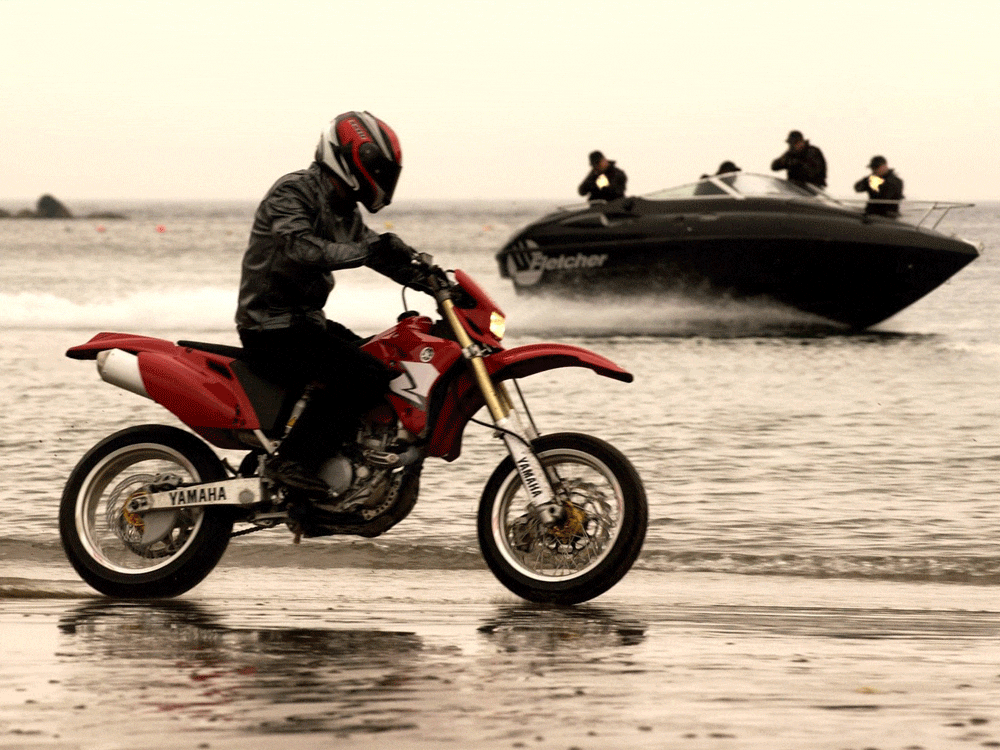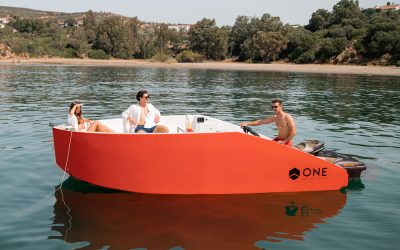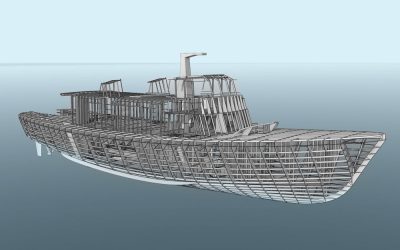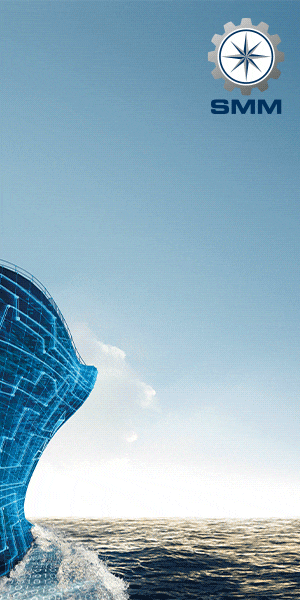One of Britain’s most iconic boatbuilders is back, after a short hiatus – and creating a new generation of battery-powered sports boats ranks among its top priorities.
Formed by Norman Fletcher in 1960, Fletcher Boats began life as a model shop in the West Midlands, before turning to real boat construction – firstly as a hobby, then as a bona fide business. Throughout the ‘swinging sixties’ and into the 1970s, the company established itself as one of the world’s leading high-quality sports boats manufacturers, attracting a wide range of sailors and racers to the brand. Additionally, the group produced its first fibreglass boat and deep-V hulls in the 1960s, before going on to win the 1974 World Powerboat Championship.
By the mid-1980s, Fletcher had added carbon fibre and Kevlar to its boat construction material options, and was enjoying a reputation as a high-end luxury brand for serious speed junkies, including professional racers and celebrities. The 2000s, however, proved a rocky period for the group, involving acquisition by a new management team and increased competition from imported speedboats.
In the late 2010s, the group briefly relocated from Wolverhampton to Itchenor, on the south coast of England, prior to agreeing a move to a larger, self-contained boatbuilding facility in Somerset. The transition was far from smooth, unfortunately, with COVID-19 stalling both the set-up of the new facility and the recruitment of new staff – but Fletcher is now settled in its new home, and firing on all cylinders. “Our Somerset facility extends to 2,787m2 over four acres,” Ed Ahmed, chief product architect at Fletcher, tells Ship & Boat International. “All designs and engineering are done in-house, though we have a small team of external consultants and naval architects who contribute as and when required.
“We are growing our workforce and have recently doubled the workforce from five to 10. The plan is to outgrow the site within the next three to five years, especially with the growth in our model range and the introduction of the F series, which will feature a fleet of four models.”
With more than 50,000 boats under its belt, and a global clientele spanning the UK, the US, Europe, Asia and the Middle East, it’s interesting to ask whether Fletcher’s approach has changed significantly since its formation 63 years ago. Ahmed replies: “Fletcher is still dedicated to producing world-class boats and designs. Our ethos is heritage, performance and innovation: we are true to our design heritage and the spirit of power and performance. The typical end user is anyone that wants to have fun and an exhilarating on-water experience – and look good while doing it.
“Now, we constantly strive to innovate given the changes in culture and technology. We are more eco-conscious and are driven by sustainability as an added process to our mindset, and now think clearly about cleaner ways to enjoy boating: in particular, using electric propulsion systems for future models.” There’s also the fact that boat ownership has enjoyed a massive resurgence over the past three years. “COVID certainly changed the lifestyle and work choices for many,” Ahmed continues. “In fact, I feel it has allowed people to think more about the balance between work and pleasure, the latter being the beneficiary. Boating is definitely an activity more are taking up – therefore, the market for the small boat recreational sector is looking very bright, and hopefully clean too!”
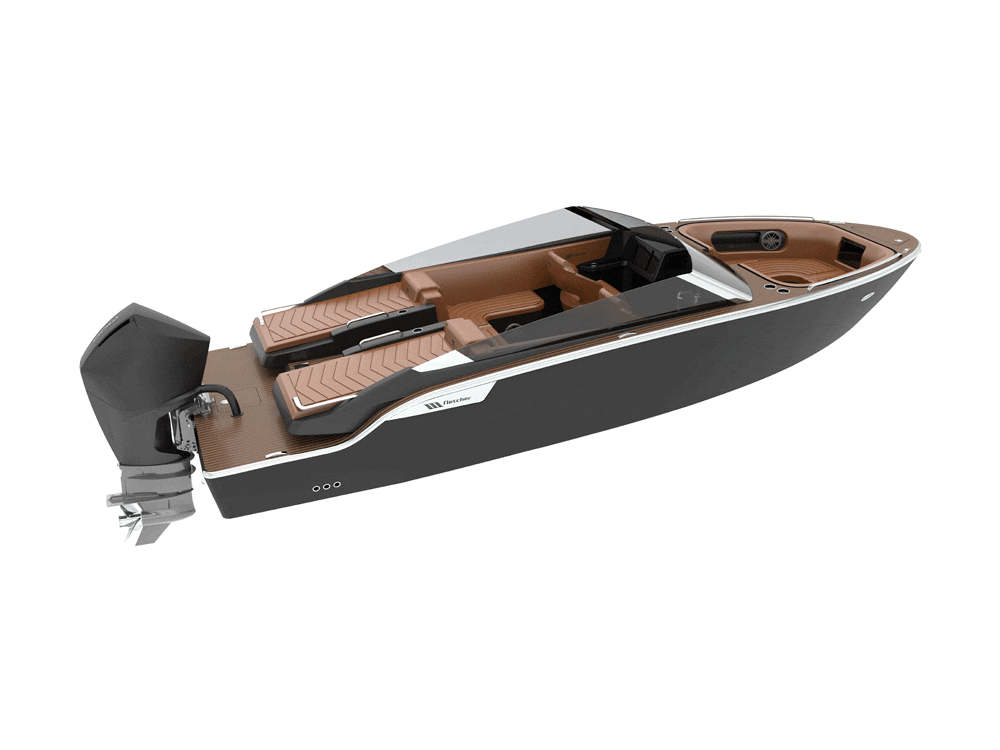
The F23 will use 126kWh of battery power to achieve a top speed of just over 43knots
Hence the creation of an electric option for Fletcher’s new F series of sports boats. “The F series is destined to be all-clean propulsion: electric, or other technologies as they emerge,” Ahmed explains, adding that Fletcher looked into biofuels, but found that batteries were the best match. This new series, he says, is targeted at a slightly different demographic to Fletcher’s legacy customers. “Its price point is a bracket or two above the classic series due to its propulsion system, its sleek design and the materials used in the build”.
Interestingly, Fletcher’s greener boating goal isn’t being driven by customer demand, “which sounds crazy”, Ahmed concedes. While the coastal ferry segment has embraced battery power, “99.99% of sports boats still rely on diesel”, he notes. “We hope that once boaters see the benefits of electric and other clean propulsion systems, the market and demand will inevitably grow.”
However, there is one crucial stipulation: whichever powertrain they happen to incorporate, these boats must be built for speed – and plenty of it. Of course, there will be some element of compromise compared to the diesel models but, as Ahmed points out, these are essentially sports boats, and must be able to perform as such. One of the biggest challenges, then, has been how to ‘repurpose’ existing battery marine solutions to meet this need.
As Ahmed says: “There are currently no systems on the market that tick all the boxes for Fletcher. Unfortunately, all the technologies are heavily focused on the commercial marine transport segment, where the focus is on range rather than on speed. A system that provides our sports/recreational boats with power and efficiency is not available, despite what might be claimed. As a result, we have had to define our own requirements and take an interdisciplinary approach to partnering with the right suppliers and specialists, to get the ideal system developed to suit our needs and our brand ethos.”
The end result of this approach is the F23, designed to accommodate eight passengers, or up to 720kg. The boat will initially be launched as a limited-edition run of petrol-fuelled models in Q1 2024, before the electric versions are rolled out later in autumn. “The battery rating will be approximately 126kWh, with 134kWh [180hp] motors,” says Ahmed, adding that the boats will incorporate lithium-ion batteries. This set-up will enable the F23 to achieve speeds up to 50mph (43.4knots).
Ahmed underlines: “With sports boats, you’re looking at short bursts of power instead of the user operating at top speed for hours.” As such, users should be able to get between 20-50 minutes of high-speed action from the electric F23 on a single charge, while spending the remaining time on the water at a speed of around 5-10knots, equating to a full day’s boating.
The F23 will feature several classic Fletcher touches, including a deep-V hull and fibreglass/carbon fibre sandwich construction. Other features will include a tinted wraparound windshield with a hinged centre section, which can be opened up to enable the owner and guests to embark via the bow, leading to a lounge area with sunken seating. The aft area offers a beam-wide bathing platform, complete with sunbeds, that can be set up for waterskiing. These skis can be stored beneath the sunbeds. The F23 will also be fitted with GPS, a digital compass, a multitouch 12” display and a Fusion audio system.
Previously, we’ve seen a fair number of electric boats that have also incorporated a diesel genset as ‘back-up’ in the event of the need for an immediate return to port. In some cases, this is a sensible decision; but it does feel like a bit of a ‘cheat’ given these particular vessels’ claims to electric independence. However, the F23 will operate purely on electric power. Ahmed adds that the boat’s energy storage system will feature an advance warning capability, sending timely alerts to the user when battery power runs low. The system will advise the user “to be sensible about how they use the boat, and where”, to help them to avoid running out of juice when at sea, he says.
Ahmed confirms that there is already a waiting list for the F23, and, beyond that series, the group aims to produce and launch “reimagined versions” of Fletcher classics, including the Zingaro, a sports micro-yacht, plus the six models in the Arrow series – one of the most recognised powerboat brands, and Fletcher’s global best seller to date. All of which means a busy few years lie ahead, but it’s good to see one of Britain’s most iconic brands back in action, expanding on its legacy with these new electric offerings.
TECHNICAL PARTICULARS
Fletcher Boats F23
Length, hull 7.15m (approx.)
Breadth, max 2.5m (approx.)
Dry weight 1.3tonnes (approx.)
Outboard(s) 1 x Mercury, 300hp (224kw)
Battery capacity 126kWh
Fuel capacity 400litres (approx, petrol version)
Fresh water capacity 80litres
Passenger capacity 8
